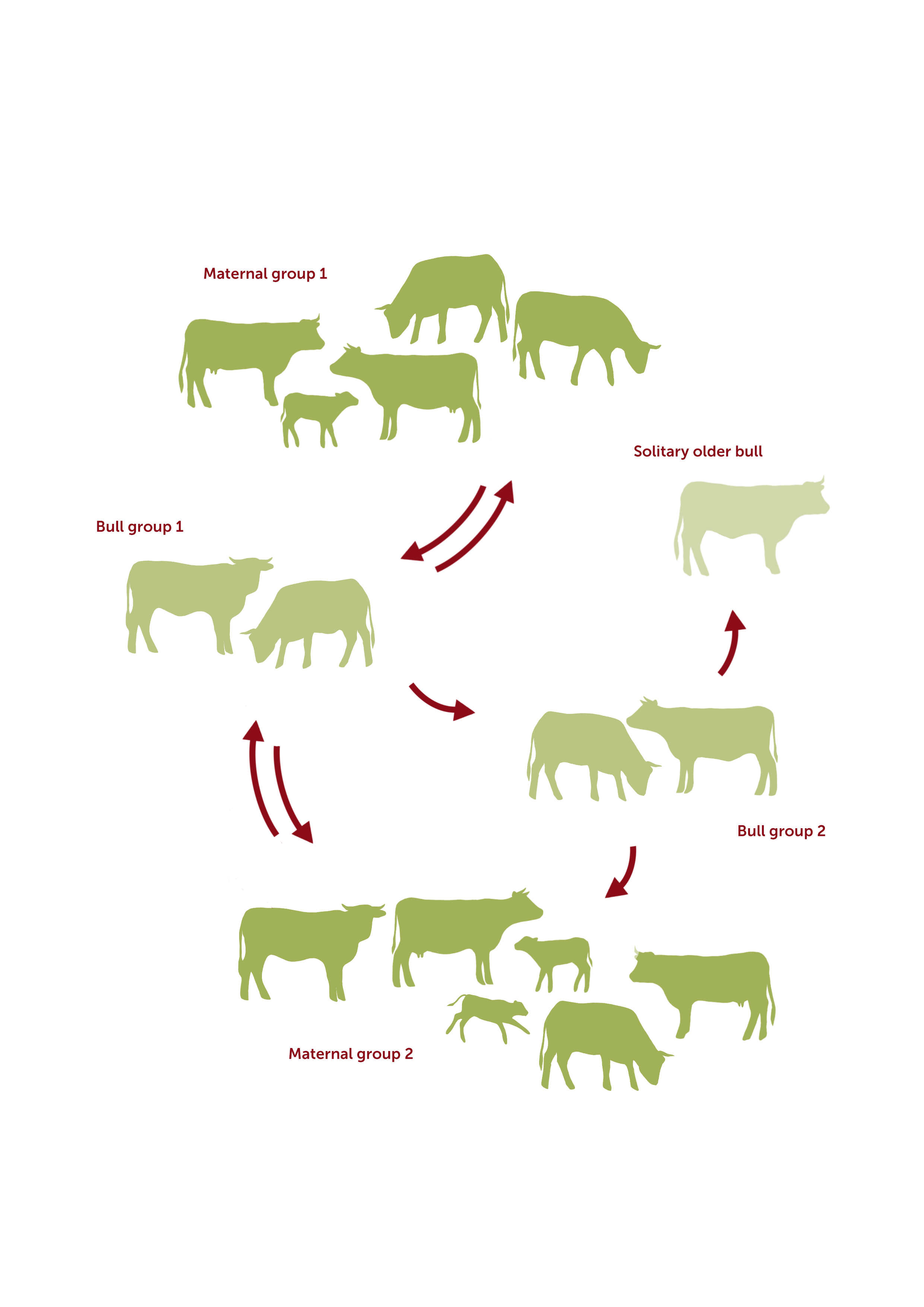What does a maternal herd in cattle look like?
Large grazers that live in the wild year-round, create their own groups and establish their own relationships. We name these groups 'social herds', a term you'll find we use regularly in our communication. Earlier we discussed the social herd structure in horses. In cattle, however, the social structure looks a little different: namely, they live under a so-called 'matriarch'. What is a matriarch? And what does a maternal herd look like? Read this article to learn more about it!
While there is a lot of information the herd structure and social behaviour of horses, a lot less is known about cattle. Horses tend to be much more expressive in their behaviour than cattle. What we do know, is that cattle live in a so-called 'matriarchal structure'. This means that the females (mothers and daughters) usually group together throughout their entire live, forming what is known as a 'maternal group'. When the bulls reach sexual maturity (which is between 2 and 4 years of age) they leave the maternal group and form a 'bull group' together. This group consists of both young animals, and older bulls. Usually, the bulls are fairly tied to their favourite spots within the landscape. It is mainly the maternal group that moves around the area a lot. Depending on factors such as the reproductive season and the available forage, the bull group temporarily joins the maternal group.
The older a bull gets, the more likely it is he chooses to live his live in solitude. The bulls literally seek peace and quiet: research shows that bulls isolate themselves to avoid social unrest. Remarkably, this does not mean that older bulls no longer attempt to reproduce: solitary bulls are sometimes still seen with a group of cows during the rut.

The composition and size of a maternal group varies by area. In large areas, a maternal group usually does not consist of more than twenty animals. Bull groups on average do not exceed ten animals.

European bison and water buffalo
The matriarchal structure does not only apply to cattle, but this herd structure also corresponds to European bison. However, groups of European bison tend to be smaller than cattle. European bison maternal groups often consist of around and about ten cows and the bulls usually live in groups of around four to six animals.
Although water buffalo are also classified under the family Bovidae, our herd managers see that their social structure does not quite match the matriarchal system of cattle and European bison. Then again, they also do not seem to form true harems as in horses. Compared to cattle and horses, FREE Nature has only been working with water buffalo for a relatively short time. We are still learning daily about their social behavior and the complex group bonds they form.

